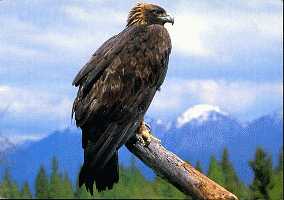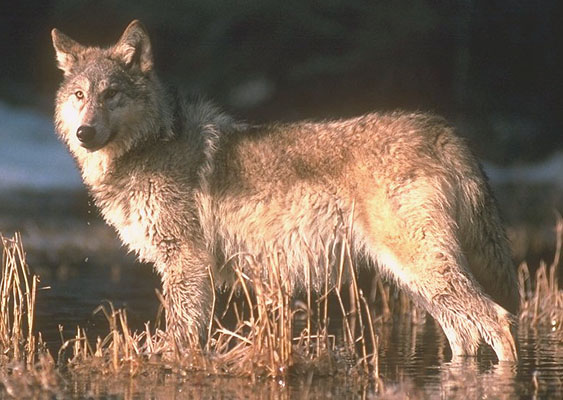|
|
The Peace Pipe
|
| No rite was more widely practiced by indians
than smoking. When an indian lit a mixture of tobacco and various aromatic
herbs - called kinnikinnick - in the stone bowl of his pipe his intent
was often deeply serious. The smoke that he exhaled was seen as a breath
of prayer, and the pipe itself was regarded as an intimate channel of communication
to the spirit world. Pipes were also used to sanctify communication between
men. An early fur trapper named Alexander Ross noted that pipe smoking
was "the introductory step to all important affairs, and no business can
be entered upon with these people before the ceremony of smoking is over."
Ceremonial pipes were the personal property
of a chief, medicine man or warrior. They were smoked according to a grave
and precise ritual to pledge an oath or ratify a treaty, which inspired
the white man's phrase "peace pipe."
The pipes were also used as passports
while traveling and for conciliation in even the most private disputes.
If a brave ran off with someone else's wife, etiquette decreed that he
send an old man to the husband bearing a pipe. If the husband smoked the
offering, it meant that he would not take revenge on the lovers. Many men
owned an unadorned everyday pipe, because smoking was also a casual habit.
But the older men sometimes felt obligated to warn the young warriors against
excessive smoking: it could cut their wind and thus reduce their stamina
in battle. |
|

|
|
|
 |
|
 |
|
The Eagle Feather
|
| When the world was new, the Creator made all
the birds. He colored their feathers like a bouquet of flowers. The Creator
then gave each a distinct song to sing. The Creator instructed the birds
to greet each new day with a chorus of their songs. Of all the birds, our
Creator chose the Eagle to be the leader. The Eagle flies the highest and
sees the furthest of all creatures. The Eagle is a messenger to the Creator.
During the Four Sacred Rituals we will wear an Eagle Feather in our hair.
To wear or to hold the Eagle Feather causes our Creator to take immediate
notice. With the Eagle Feather the Creator is honored in the highest. When
one receives an Eagle Feather that person is being acknowledged with gratitude,
with love, and with ultimate respect. That feather must have sacred tobacco
burnt for it. In this way the Eagle and the Creator are notified of the
name of the new Eagle Feather Holder.
Feathers notched, clipped, dyed, or otherwise
altered were used by the Indian as symbols of specific kinds of exploits,
or coups, as shown below. from left to right: 1) wearers first coup upright
feather with horsehair tuft; 2) wearer wounded upright feather dyed
red; 3) wearer wounded but killed foes upright feather with quill work
bands, (one band per kill) 4) wearer killed foe red spot on feather; 5)
wearer cut foe's throat and took his scalp notch in feather; 6) wearer
wounded many times split feather; 7) wearer cut foes throat top of feather
clipped on diagonal; 8) wearer counted coup four times serrated edge on
feather; 9) wearer counted coup five times sides of feather partially removed. |
|
 |
|

|
|

|
|
The Wolf
|
| Most Native Americans respected the wolf's
prowess as a hunter, especially his ability to always secure game, his
stamina, the way he moved smoothly and silently across the landscape. They
were moved by his howling, which they sometimes regarded as talking with
the spirit world. The wolf appears in many of their legends as a messenger
in fact, a great long distant traveler, a guide for anyone seeking the
spirit world.
The Wolf was also held in high regard because,
though he was a fiercely loyal family animal, he was also one who took
the role of provider for the larger community (for carrion eaters like
the fox and raven). This was something the tribal Indians understood very
well, for in difficult times a man had the dual responsibility of feeding
his own family as well as others. With such a strong sense of the interdependence
among all creatures and an acute awareness of the ways in which his own
life resembled the wolf's the Indian naturally turned to the wolf as a
paradigm - a mirror reflection.
To fit into the universe, the Indian had to
do two things simultaneously: be strong as an individual, and submerge
his personal feelings for the good of the tribe. In the eyes of many Native
Americans, no other animal did this as well as the wolf.
The wolf fulfilled two roles for the Indian:
he was a powerful and mysterious animal, and so perceived by most tribes;
and he was a medicine animal, identified with a particular individual,
tribe or clan.
That each perception contributed to and reinforced
the other - as the individual grows stronger, the tribe grows stronger,
and vice versa - is what made the wolf such a significant animal in the
eyes of the hunting peoples. The inclination of white men to regard individual
and social motivations in themselves as separate led them to misunderstand
the indians. The Indian was so well integrated in his environment that
his motivation was almost hidden; his life way was as mysterious to white
men as the wolf's.
|
|
 |
|
|
Disease
|
| Before Europeans began inhabiting North America,
it was inhabited by an estimated 10 to 16 million Americans. Why
don't I call them Indians you ask? Well contrary to present beliefs, most
Europeans referred to the Natives of this country as simply Americans prior
to the War of 1812.
As many of you know, the Europeans brought
with them all the of sicknesses & diseases associated with living in
dirty cities with open sewage running in the streets. To make matters
worse, they rarely bathed almost never had all of their clothes off
at the same time! Upon meeting "the Whites", the natives thought they stunk
& tried to teach them to bathe, but were unsuccessful, as "the Whites"
found it immodest!
Tragically, the Natives had never been in contact
with these illnesses & were ravaged by them. The bubonic plague, small
pocks & even influenza killed them on contact. It killed between 90-
95% of them! (by comparison, The Great Plague in Europe in the Dark Ages
killed about 30%) The remaining fled to other towns & villages, which
caused the sickness to spread like a red carpet before the Europeans.
Can you imagine the breakdown that would occur
to our culture if 90% of us got violently ill and died, just as an unknown
culture arrived on our shores? The Europeans felt it was God's will, and
even called it God's plague. Understandably many natives lost their will
to achieve long term goals, such as planting for the next season etc. They
were in disarray. |
|
 |
|
| "Hear me, people, we have now to deal with
another race - small and feeble when our fathers first met them, but now
great and over bearing. Strangely enough, they have a mind to till the
soil, and possession is a disease with them. These people have made
many rules that the rich may break, but the poor may not. They take tithes
from the poor and weak, to support the rich who rule. They claim this mother
of ours, the earth, for their own and fence their neighbors away, they
deface her with their buildings and their refuse. That nation destroys
all who are in its path......" |
|
 |
|

